David Dimbleby on the monarchy: 'Perhaps it's time to scale things back'
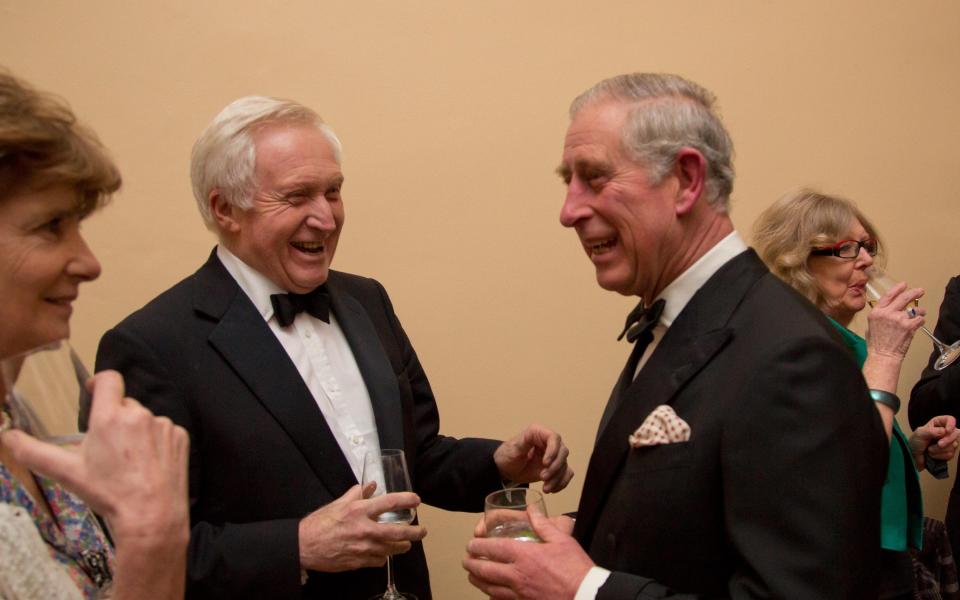
QUEEN ELIZABETH II’S CORONATION
There are many ways of commentating on state occasions. Some commentators gush with enthusiasm. Others try to prompt the viewer into an “appropriate” reaction, telling them that a particular moment is poignant or moving. I try a different approach. I imagine myself sitting on the sofa beside the viewer, as though we are watching the event together, only speaking when there is something that needs explaining, and trying to curb my instinct to keep talking.
The secret to good commentary is knowing when to keep silent, and letting the event speak for itself. It’s the silence not the words that count.
As I write, I have on my desk a book of 183 pages, bound in red Morocco leather and embossed in gold with a Royal Coat of Arms and the title Coronation of Her Majesty Queen Elizabeth II. Underneath, the subtitle reads The Form and Order of Service and the Music Sung in the Abbey Church of St Peter Westminster. Coronation Day. 2 June 1953. I remember the day well.
My mother, my father and I (aged 14) had spent the night on our Dutch sailing barge, Vabel, moored on the Thames just above Westminster Bridge. My father liked idiosyncratic arrivals and departures. For a royal tour he would have his Rolls Royce shipped abroad so that he could travel in style. For the Coronation he had persuaded himself that no hotel rooms would be available in London, at least not near Westminster Abbey where he would have days of rehearsal. Naturally the solution was to have Vabel moored in solitary splendour in the middle of the river opposite the Houses of Parliament.
At four o’clock on Coronation morning, in the cramped cabin, he was changing into morning dress: striped trousers, tailcoat and top hat. At half past four, in the early light, a police launch came alongside to take us to Westminster Pier. We disembarked and went on foot down the empty roads to the abbey.
On the pavements to each side thousands of people had camped out all night, some even for two or three days, to catch a glimpse of the Queen. Instead, at five in the morning, they caught a glimpse of my father and a cheer went up. He raised his top hat to acknowledge it and bowed in mock solemnity.

It was the most important broadcast my father had done since the end of the Second World War. His commentary was typed out and pasted inside the book, episode by episode, with reminders to himself in the margins about the important pacing of his words: “Talk slowly.” “Start smartly.” “Wait on actions.” and “Wait until Canopy well on way.” (The canopy was the cloth of gold held over the Queen’s head for the anointing, to conceal this sacred moment from public gaze.)
The language he used was simple, with occasional archaisms to match the ceremonial. “The ring wherein is set a sapphire” and, memorably, “The moment of the Queen’s crowning is [not has] come.”
At the moment of the crowning he put down his microphone and, wanting to record what he could see for posterity, picked up his cine camera and filmed the event. A blurred shot from high up in the gallery of the abbey, above the nave, shows no Queen, no crown, only the blazing lights of the chandeliers that blocked his view.
It was a pity he could not record it because he had orchestrated this part of the Coronation himself. Noticing in rehearsals that the Archbishop of Canterbury was placing the crown on the Queen’s head rather abruptly, not milking the moment for its significance, he had persuaded him to raise it above her head and then, like a soldier practising arms drill, count ‘two, three’ before lowering it. The Archbishop, to my father’s delight, obeyed.
On the morning of the Coronation, my mother and I left my father, armed with his Order of Service, at the abbey. We walked on to Regent Street where we had seats on the first floor of a shop to watch the programme on black-and-white television, and to see the two-mile-long procession that followed the service with our own eyes.
MY FAUX PAS AS A ROYAL BROADCASTER
Royal events are live, they are complex, and they are important to those who watch. That makes them uniquely exciting and difficult to broadcast. The first rule is that things almost always go wrong: not necessarily very wrong, but usually a bit wrong, so however much you prepare you can never prepare enough. A slip of the tongue is out and away and cannot be called back.
I still blush at the thought of one of my faux pas. In 2000, the Queen Mother celebrated her hundredth birthday. The Band of the Irish Guards played ‘Happy Birthday’ and there was a 41-gun salute fired by the Kings Troop Royal Horse Artillery. The Queen Mother was driven in an open carriage drawn by two handsome white horses, properly known as the Windsor Greys. “The Queen Mother comes through Horse Guards Arch,” I intoned, “drawn by two Windsor Gays.” No elegant way of correcting myself. It would only make things worse. The perils of live broadcasting.
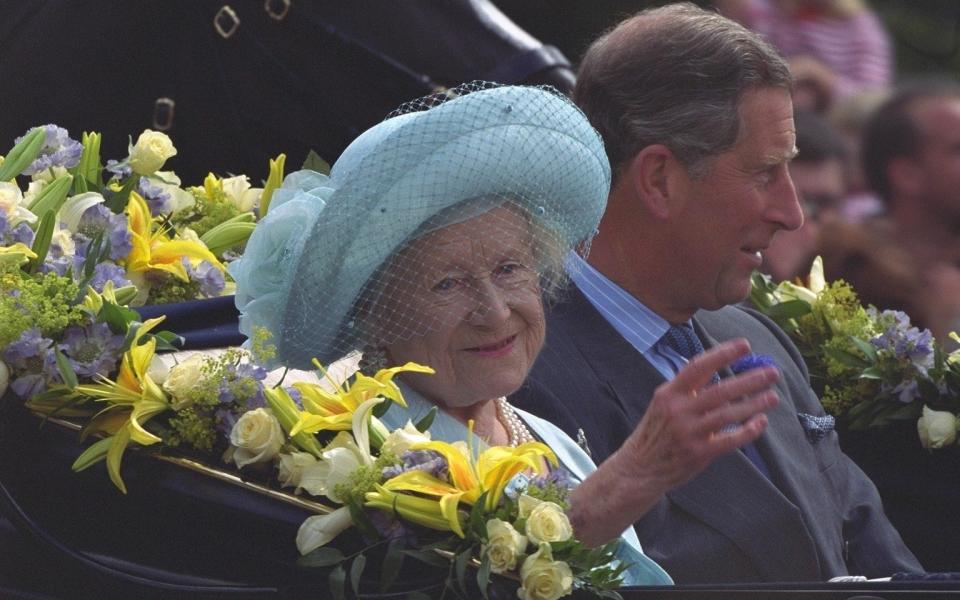
Other mistakes are less easily explained. Why did it come into my head to describe the Duke of Edinburgh – wearing a shiny black top hat and sitting in an open horse-drawn carriage being driven up the hill towards Windsor Castle, with Lech Wałęsa, the former shipyard apprentice who had led the Solidarity movement and was now the first elected President of Poland, sitting beside him – as “looking like Count Dracula”? It was a happy occasion, the crowds were cheering, and I was trying to enter into the informality and general air of goodwill.
The tabloid press took offence – the Daily Mirror nominated me Twit of the Week – as no doubt did the Duke. The BBC duly apologised and I was rapped over the knuckles.
ROYALTY AND THE BBC
Each institution, both BBC and monarchy, seemingly bound in an incestuous relationship, grapples with a conundrum. For the monarchy it is how to combine the pomp of a head of state with popular appeal. Are our monarchs meant to be symbols, aloof and separate? Or are they meant to be human beings just like us who happen to have been given the responsibility of being head of state? Which approach will best ensure the monarchy’s continued acceptability and popularity?
Perhaps it is time to scale things back. It is often said of our state ceremonial that we do these things better than anyone else. And it’s true. But is it still something to be proud of? I wonder. We are after all no longer an empire, as we were when much of this performance was invented. We are a middle ranking power struggling to define our place in a global world, struggling to hold our country together.
The BBC, on the other hand, has to decide the degree to which it should be a disinterested observer of monarchy or the vehicle for its promotion. The corporation’s answer has been to handle the monarchy with respect and reverence – seeing the enhancement of the institution, and reflecting its popularity with the public, as part of its remit.
It has its own senior member of staff, the Royal Liaison Officer, whose job it is to maintain a smooth working relationship with the Palace, and who is customarily made a member of the Royal Victorian Order (an honour in the gift of the monarch) on leaving office.
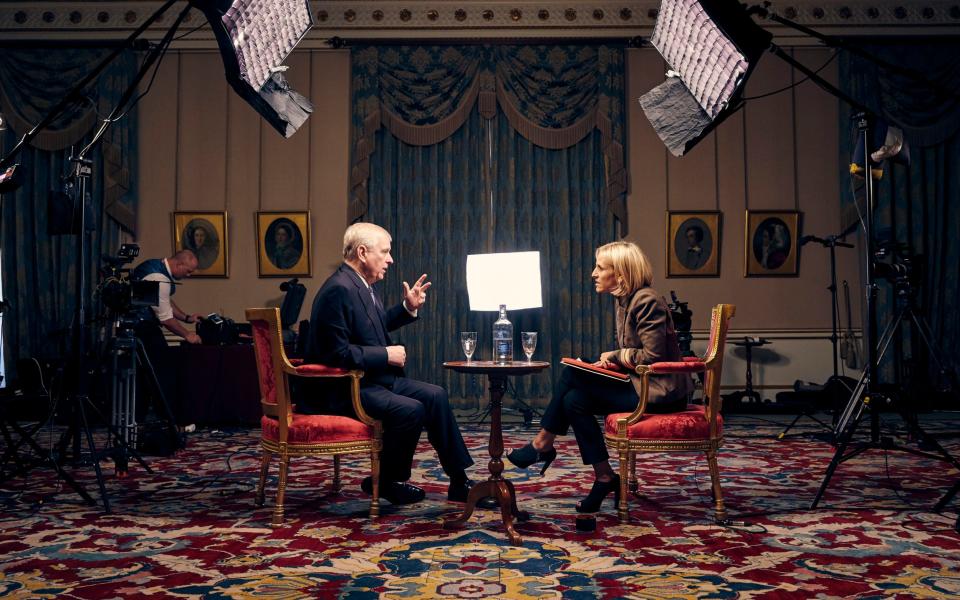
In theory, no contact with the Royal Family is allowed except through that office, whose purpose, among other things, is ‘to coordinate bids from BBC programmes for interviews with members of the Royal Family’. There have been only two notable exceptions: Martin Bashir’s 1995 interview with Diana, Princess of Wales, achieved by subterfuge; and Emily Maitlis’s 2019 interview with Prince Andrew, which he agreed to when invited by Maitlis, after he had, apparently, checked with the Queen.
So much for the Royal Liaison Officers, excluded from the two most explosive interviews ever given by Royalty.
MARTIN BASHIR
When Martin Bashir, a young and inexperienced reporter, came to Panorama in 1995 with the news that Diana had agreed to give him an interview, the editor Steve Hewlett was ecstatic. If Bashir could bring it off, it would be the scoop of the decade. It seems that no one asked how Bashir had managed to persuade Princess Diana to talk to him.
The interview was duly transmitted and over 20 million people watched in astonishment as Diana explained that there were three in her marriage, which was “a bit crowded”, and described her post-natal depression, her bulimia, her own adulterous affair, her doubt about whether Charles would ever become king, and her belief that the monarchy should “walk hand in hand” with the public, rather than be so distant.
How Bashir secured the interview remains a mystery. All we know from Lord Dyson’s 2021 investigation, instigated by the BBC, is that the BBC’s attempts to discover what had happened were “woefully inadequate”. We know Bashir had fake bank statements printed purporting to show that an employee of Earl Spencer, Diana’s brother, was taking money from the press to pass on insider gossip from the Spencer family. We also know that Bashir produced further fake bank statements showing payments into the accounts of both Princess Diana’s and Prince Charles’s private secretaries.
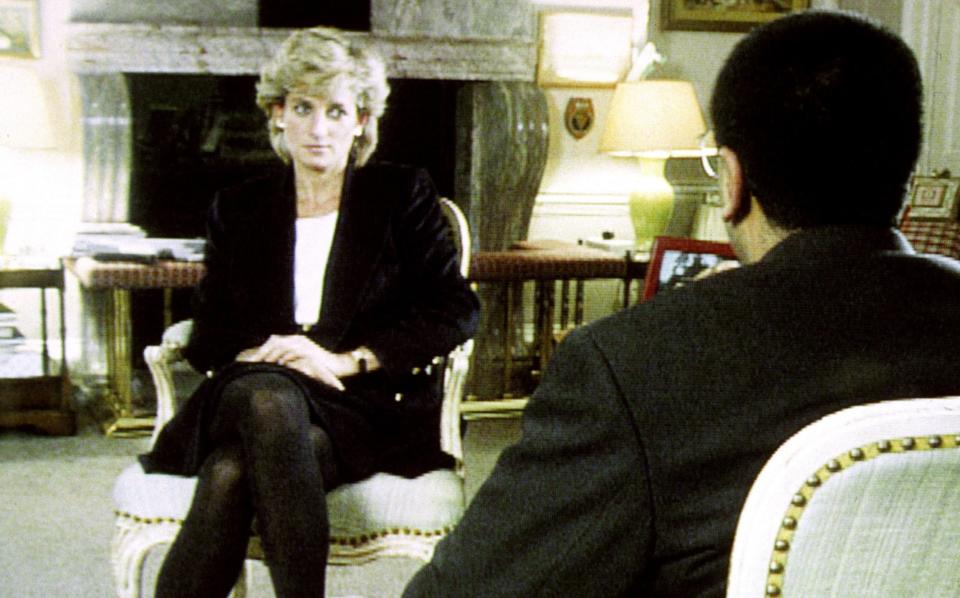
Quite what these fake statements were meant to achieve has never been explained. Spencer believes it was to win his confidence and induce him to introduce Bashir to Diana. Bashir says he already knew Diana and had her trust. That Bashir lied to various people at the BBC back in 1995 when they quizzed him about the forged bank statements is beyond doubt. Dyson concluded that the BBC at every level had failed to properly investigate what Bashir had been up to, and had later failed to answer legitimate questions being raised in the press about the issue, and failed even to refer to the controversy, by then a matter of public concern, in its own news bulletins.
Dyson says there was a BBC decision NOT to cover the story, and that if it had been left to individual editors, it would have been extraordinary if none of them thought it “not newsworthy”. By failing to do so, the BBC he found “fell short of the high standards of integrity and transparency which are its hallmark.”
Investigations into the BBC’s own behaviour, whether over Diana and Bashir, or Andrew Gilligan and the 45 minutes claim, or Jimmy Savile, inevitably reveal a corporation of sclerotic complexity, where everyone seems to be busy covering their own back, where key documents go missing, and key conversations are not remembered. It may be behaviour common in many large organisations, but when the BBC, which supposedly belongs to us all and aspires to transparency in all its dealings, fails in this way it is particularly damaging.
Mysteries remain even after all these years. When Dyson’s report was published Tony Hall, who had been Director of News in 1995, resigned from his most recent office as the Chair of Trustees at the National Gallery. Like all those within the BBC involved in this drama, Hall refuses to talk publicly about what happened.
Equally mysterious is how Bashir could conceivably have been appointed in 2016, over 20 years later, as – of all things – the BBC’s Religion Editor. The BBC can certainly move in a mysterious way in its wonder to perform.
MY FATHER AND THE QUEEN MOTHER
Television has shaped our image of the monarchy, glorying in the theatre of ceremonial and even helping to create it. In return, the monarchy has provided the BBC and its viewers with a steady stream of news and entertainment. The quantity of coverage has declined in recent years: in the 1950s and 1960s all kinds of royal events were televised, from the annual Maundy Money service to the Queen Mother opening a needlework exhibition at Clarence House.
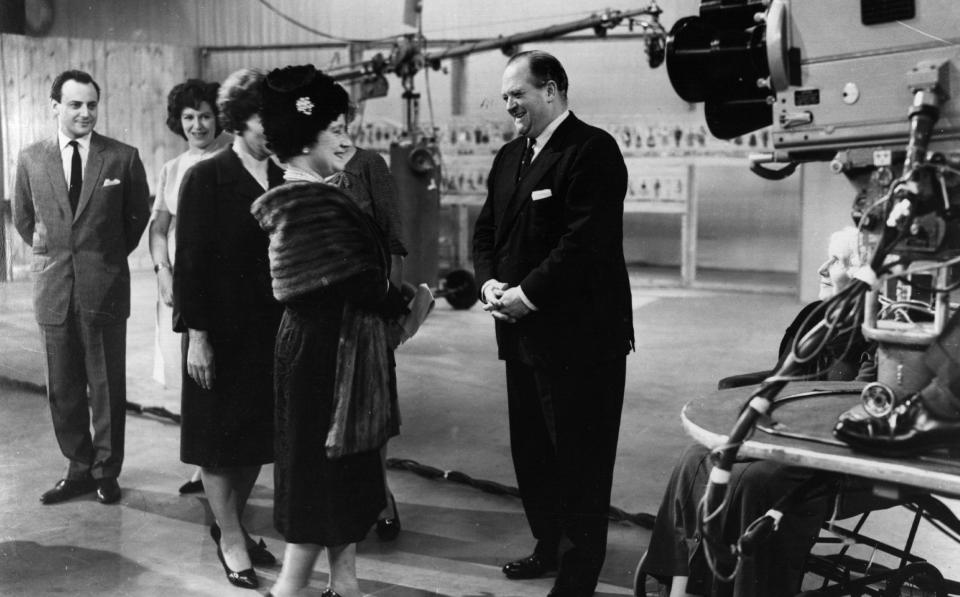
My father was asked to give viewers a guided tour of the artefacts as the precursor to the Queen Mother’s arrival. He knew nothing about needlework but did his homework like a true professional and started the programme with an elegant description of the works on show. The Queen Mother was late. He went on talking. She still had not arrived. By now he was on the verge of panic. He had said everything he knew about needlework and indeed was probably hoping he would never see embroidery again.
At last she came in and the opening ceremony started. He was back on safe ground. After the programme was over he was by chance in an outer room when she came over to him and said, “Oh Mr Dimbleby, I am sorry I was so late. I hope it was not inconvenient. I was watching your commentary on a television outside and I was so fascinated by what you were saying that I could not tear myself away.”
Extracted from Keep Talking by David Dimbleby, published by Hodder & Stoughton at £25 on Thursday. To order your copy for £19.99, call 0844 871 1514 or visit Telegraph Books
Read David Dimbleby's interview with Lynn Barber in the Telegraph Magazine: ‘Liz Truss’s behaviour was unbelievable’
See the first exclusive extract from David Dimbleby's new book: The BBC tried to push me out of Question Time for being too old

 Yahoo Movies
Yahoo Movies 